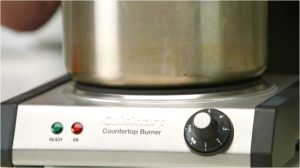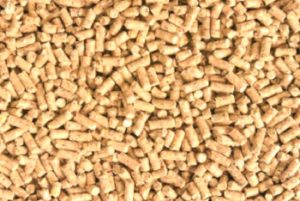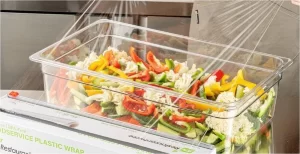Steam Oven Pros & Cons – Should You Get One?
Note: This article may contain affiliate links, which means if you make a purchase following our links won’t cost you extra, but we may earn a commission. Learn more
A steam oven is worth it if you prioritize healthier cooking, better flavor, and faster meal prep. It makes sense for those renovating their kitchen or willing to invest in long-term efficiency and food quality.
Steam ovens use moisture to cook food, keeping dishes juicier and more flavorful compared to traditional ovens. They work especially well for vegetables, meats, and baked goods, preserving nutrients that dry heat can destroy. Faster cooking times are another perk—steam transfers heat more efficiently than air, cutting down prep without sacrificing taste.
These ovens are energy-efficient, using less power than conventional models since they reach temperature quickly. Smaller units heat up even faster, making them ideal for quick meals. While the upfront cost is higher, the benefits in food quality and lower utility bills can justify the expense over time.
Maintenance is straightforward, with many models featuring self-cleaning functions. If you enjoy cooking fresh, healthy meals and want to upgrade your kitchen’s capabilities, a steam oven is a smart choice. The improved texture and taste of dishes might just make it your most-used appliance.
What Is a Steam Oven and How Does It Work?
A steam oven cooks food using hot steam instead of dry heat like traditional ovens. The appliance heats water to create steam, surrounding food with consistent moisture for even cooking. This method preserves nutrients, enhances flavors, and prevents drying out, making it ideal for vegetables, meats, and delicate dishes.
Most steam ovens operate in two ways: pure steam mode for gentle cooking or combi-steam mode, which combines steam with convection heat for crisping and browning. Built-in water tanks supply moisture, while advanced models offer precise temperature control for professional results. Faster cooking times are possible because steam transfers heat more efficiently than air.
Unlike microwaves, steam ovens do not zap moisture from food. Instead, they lock it in, producing juicier, restaurant-quality meals with minimal effort. The technology suits health-conscious cooks who want to avoid oil-heavy methods while keeping meals flavorful.
Comparing Steam Ovens to Other Cooking Appliances
Steam ovens outperform conventional ovens in moisture retention and nutrient preservation. Traditional baking often dries out food, while steam keeps proteins tender and vegetables vibrant. Energy efficiency is another advantage—steam ovens preheat faster and use less electricity than standard models.
Microwaves may reheat quickly, but they lack the precision and texture enhancement of steam cooking. Air fryers excel at crispiness but struggle with delicate items like fish or custards. A steam oven bridges the gap, offering versatility for slow braising, baking, and reheating without sacrificing quality.
The main drawback is cost—steam ovens are pricier upfront. Yet, long-term savings on energy and healthier meal prep can justify the investment for frequent cooks. Those prioritizing convenience may prefer multi-function combi ovens that merge steam with roasting capabilities.
How to Use a Steam Oven
Getting the best results from a steam oven requires proper technique. Follow these steps to maximize its potential.
1. Fill the water tank with distilled or filtered water to prevent mineral buildup.
2. Select the cooking mode—pure steam for gentle dishes, combi-steam for crispy textures.
3. Adjust temperature and time based on the food type, using presets if available.
4. Place food in perforated trays to allow steam circulation around all sides.
5. Check doneness a few minutes early to avoid overcooking, as steam works quickly.
6. Wipe down the interior after use to maintain hygiene and prevent residue buildup.
Mastering these basics ensures perfectly cooked meals with minimal effort, whether reheating leftovers or preparing gourmet dishes.
Steam Oven vs. Conventional Oven: Which Performs Better?
Cooking Performance
Steam ovens maintain consistent moisture levels, preventing dry or overcooked results. Conventional ovens rely on dry heat, often leading to uneven cooking and moisture loss. Delicate foods like fish and vegetables turn out superior in steam ovens, while traditional ovens excel at crispy roasting and baking.
Speed and Efficiency
Steam ovens heat up faster due to water’s superior heat conductivity. Dishes cook quicker with steam, reducing overall meal prep time. Conventional ovens take longer to preheat and cook, consuming more energy in the process.
Versatility
Conventional ovens handle baking and roasting better, creating crispy crusts and browned surfaces. Steam ovens lack this browning effect unless equipped with a combi function. For reheating or gentle cooking, steam ovens outperform traditional models.
Health and Nutrition
Steam ovens preserve vitamins and minerals better than conventional ovens, which can degrade nutrients at high heat. Health-conscious cooks benefit from steam cooking’s oil-free approach, while traditional ovens require fats for optimal flavor.
Best Uses for a Steam Oven
Perfectly Cooked Vegetables
Steam ovens retain color, texture, and nutrients in vegetables, unlike boiling or roasting. Broccoli, asparagus, and carrots turn out crisp-tender without losing nutritional value.
Juicy Proteins
Fish, chicken, and pork stay moist and tender in a steam oven. Dry, overcooked meat becomes a thing of the past with precise steam control.
Freshly Steamed Seafood
Shellfish and delicate fish fillets cook evenly without falling apart. Steam preserves natural flavors and textures, making it ideal for seafood lovers.
Homemade Bread and Pastries
Combi-steam modes create crispy crusts with soft interiors, perfect for artisan bread and flaky pastries. Steam prevents dough from drying out during baking.
Effortless Reheating
Leftovers regain freshly cooked taste and texture in a steam oven. Unlike microwaves, steam reheats without making food rubbery or unevenly warm.
- Read More: Steam Oven Pros & Cons – Should You Get One?
Nuwave Steam Oven Review – Is It Worth It?
Capacity
- 6-quart family-sized cooking capacity
Key Features
- Stainless steel durable construction
- 10-in-1 multi-cooker functionality
- Digital touch control panel
- Auto shut-off safety feature
- Dishwasher-safe removable parts
- Fast steam cooking technology
Specialty
- Healthier oil-free cooking
- Even heating for perfect results
- Compact countertop design
Compatible For
- Vegetables, seafood, meats
- Reheating meals without drying
- Baking & proofing bread

Why This Stands Out
The Nuwave Steam Oven combines space-saving convenience with multi-functional cooking, making it ideal for health-conscious households. Its fast steam technology ensures quick, even results without sacrificing flavor or texture.
Special Note: Always check product dimensions for fit. Performance may vary based on usage.
Who Should (and Shouldn’t) Buy a Steam Oven?
Pros
- Produces healthier, nutrient-rich meals
- Cooks faster and more evenly than conventional ovens
- Ideal for baking, steaming, and reheating
- Preserves moisture in proteins and vegetables
- Energy-efficient with quicker preheating
Cons
- Higher upfront cost compared to traditional ovens
- Limited browning without combi-steam function
- Requires regular descaling and maintenance
- Takes up additional counter or built-in space
- Not ideal for deep frying or high-heat searing
Best For
- Health-focused individuals
- Home chefs who value precision
- Families wanting quick, nutritious meals
Not Ideal For
- Those on a tight budget
- Cooks who prefer deep frying or charring
- Kitchens with limited space
Read Also:





